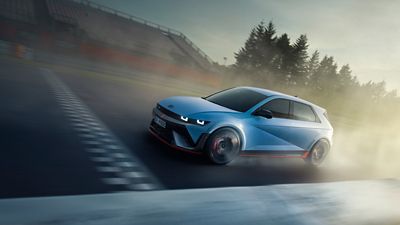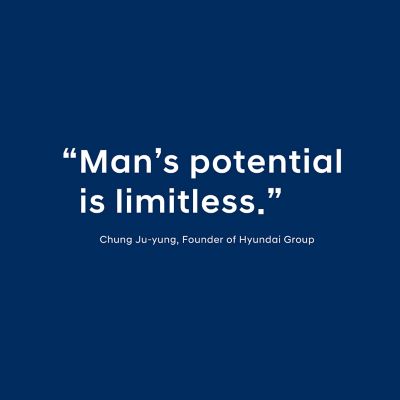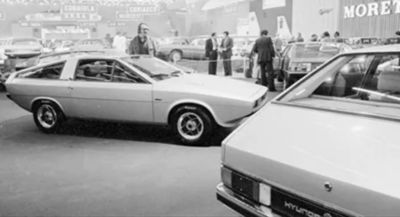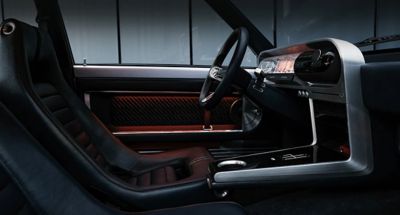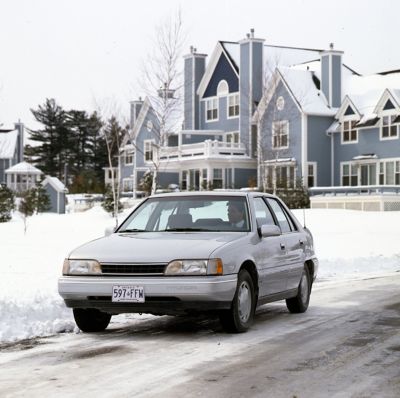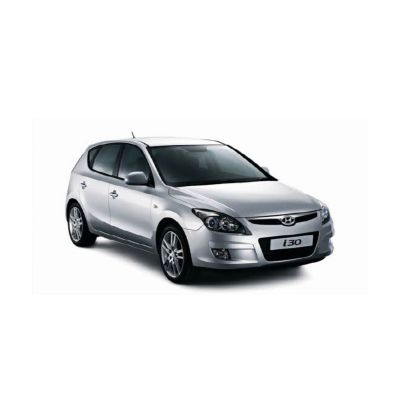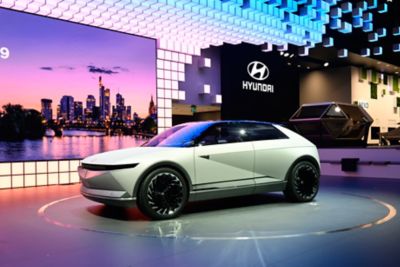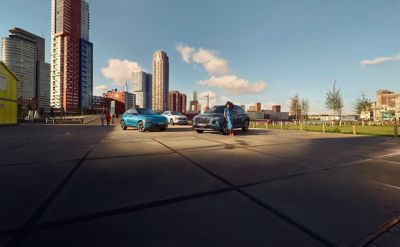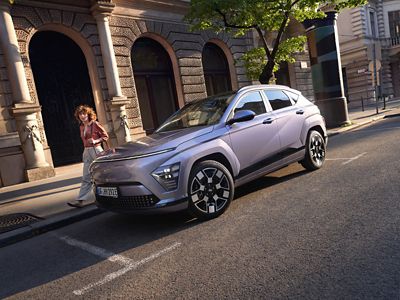Progress does not happen by chance, it is shaped by history.
At the beginning, there was a man with the determination to give his country and his children a new perspective. That’s why Chung Ju-yung founded Hyundai, and that’s what shapes us to this day.
Our founder
One man driven by a desire for better.
As the oldest child of farmers he was expected to take over the family with 6 younger siblings. However, he decided to look for opportunities. He therefore fled his home three times – the last time in 1931 at the age of 18 – hoping to be able to provide a better life than his family. The first time, at the age of 16, he and a friend reached the town of Kowon and took up jobs as construction workers, Chung realised his passion for civil engineering. It went well for two months until his father learned of Chung’s whereabouts and took him back. The second time Chung and his friend were betrayed by a stranger who promised them jobs, but took all of their money instead.
He managed to get a train ticket to the capital by selling one of his father’s cows. After he had arrived in Seoul, Chung hoped to start a career as an accountant and therefore went to a local bookkeeping school. He read a lot about a certain Abraham Lincoln who had managed to make a name for himself despite coming from a rather poor background. Two months later he was found by his father who took him back to his hometown, again.
Back in the country, however, the father realised his son’s relentless desire to see the world – and eventually let him go. From 1935 on, Chung persevered in various fields, from working as a dock worker, carrying stones to delivering rice- which required him to learn how to ride a bike. Thanks to his passionate dedication and his unwavering vision, Chung became the owner of the shop within two years. But then another challenge came up: rice trade was forbidden in Korea.
In 1941, he started a car repair shop in Seoul, his first contact with the automotive world. Even in the early 1940s, Chung’s company was just like Hyundai today: quick and efficient. He later said with pride, “we repaired in only five days what took other companies twenty”.
Within three years, the number of employees rose from 20 to 70, which is why the government decided to merge Chung’s business with a steel mill to support war efforts. In 1947 he started his fifth job as founder of the Hyundai Group by entering the building trade. As government contractor his company “Hyundai Engineering & Construction“ was part of the country’s rejuvenation – which of course included building roads. Chung quickly realized that if “roads are the country’s veins, cars are the blood running through them”. Chung, a farmer’s son who was never afraid of facing obstacles and starting over and over again, played an important role in rebuilding Korea and making his original vision a reality: “If someone asked me what is the motivating force for Hyundai – a desire for better.” And what about the cow? Shortly before his passing, founder Chung repaid his debt by gifting his country 1001 cows in a symbolic gesture: a tribute to his beloved father who made all of this possible.


1967 - 1990
The era of car manufacturing begins.
Pony
Pony Era.
Rapid expansion & the first electric cars and hybrids.
The 1980s was a time of rapid expansion for Hyundai as the company became an international player and started competing with traditional automakers. The 1990s saw Hyundai experiment with a number of electric and hybrid vehicles.


2000-2009
The transformation into a world-class brand.
2010-2025
2010 to today: pioneers in future mobility.
